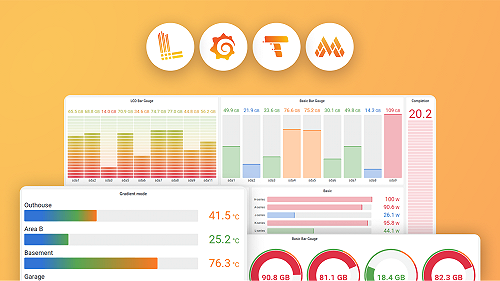Send and ingest OTLP data
OpenTelemetry provides a unified way to collect, process, and export telemetry data (metrics, logs, and traces) using the OpenTelemetry Protocol (OTLP). Ingest OTLP data into the Grafana observability stack to enable analytics, visualization, and alerting capabilities.
Prerequisites
Before you send OTLP data, ensure you have the following:
- An application or service instrumented with OpenTelemetry, or an OpenTelemetry Collector that gathers telemetry data
- Network connectivity from your data source to your chosen OTLP endpoint (Grafana Cloud or self-managed)
- Access credentials or configuration details for your target OTLP endpoint
Recommended setup for Grafana Cloud
Grafana Labs recommends that you set up OpenTelemetry components, including instrumentation and an OpenTelemetry Collector distribution, using one of the Grafana Cloud setup guides.
These opinionated guides make it easy to get started. They include all the binaries, configuration, and connection parameters you need to set up OpenTelemetry for Grafana Cloud.
Grafana Cloud OTLP Endpoint
Choose Grafana Cloud for a fully managed, scalable solution to ingest and analyze your OpenTelemetry data without managing infrastructure. Grafana Cloud offers a managed OTLP endpoint to ingest OpenTelemetry data. Configure your OpenTelemetry Collector or SDKs to send data to the Grafana Cloud OTLP endpoint to centralize metrics, logs, and traces for analysis and visualization in Grafana Cloud Application Observability and related tools.
Refer to the Grafana Cloud send OTLP data documentation for instructions on how to set up and configure your application to send OTLP to Grafana Cloud.
OTLP format consideration
OpenTelemetry doesn’t specify a data storage approach and leaves it to the observability backend to implement. Refer to the OTLP format considerations documentation for information on how OpenTelemetry metrics, logs, and traces are converted to Prometheus/Mimir, Loki, and Tempo.
Multi-Zone support
Grafana Cloud provides multi-zone OTLP data ingestion under certain conditions, which provides higher availability. Refer to the Multi-Zone OTLP endpoint documentation for more details on the level of support and how to get it configured.
Self managed observability
Opt for a self-managed observability stack if you require full control over your infrastructure, data storage, and specific deployment configurations. Grafana’s open source observability stack provides dedicated ingestion points for OTLP data:
Grafana Mimir
Grafana Mimir enables you to ingest Prometheus or OpenTelemetry metrics. You can run queries, create data with recording rules, and set up alerting rules across multiple tenants for tenant federation.
Refer to the Grafana Mimir OTLP endpoint documentation to send and ingest OTLP metrics in Grafana Mimir.
Grafana Loki
Grafana Loki is a log aggregation system inspired by Prometheus. It provides horizontal scaling, high availability, and multi-tenancy. It offers cost effectiveness and ease of operation. Loki doesn’t index log content. It indexes a set of labels for each log stream.
Refer to the Grafana Loki OTLP endpoint documentation to send and ingest OTLP logs in Loki.
Grafana Tempo
Grafana Tempo is an open source, distributed tracing backend. It offers ease of use and high-scale tracing. Tempo lets you search for traces and generate metrics from spans. You can link tracing data with metrics and logs.
Refer to the Grafana Tempo OTLP endpoint documentation to send and ingest OTLP traces in Tempo.
Docker OpenTelemetry LGTM
The Grafana Labs docker-otel-lgtm project provides an open source backend for OpenTelemetry in a Docker image. This backend includes an OpenTelemetry Collector, Grafana, Mimir, Loki, and Tempo. Use it for self-managed development, demo, and testing environments.
